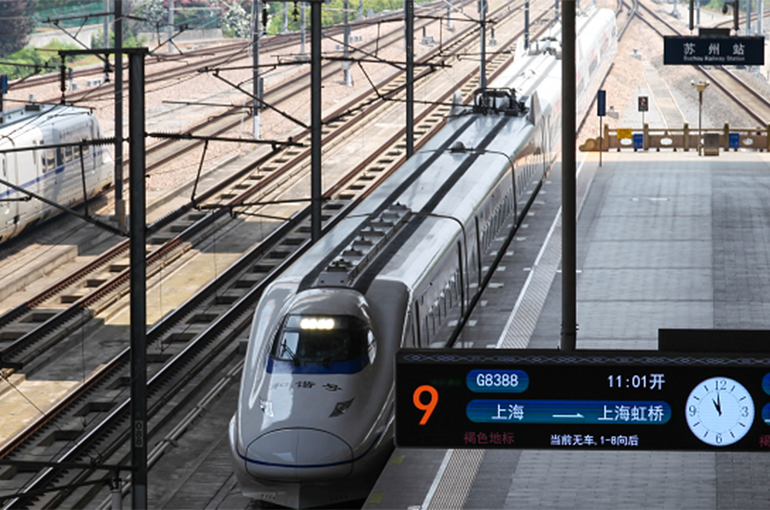 Yangtze River Delta's High-Speed Rail Network Reaches 7,200 Km
Yangtze River Delta's High-Speed Rail Network Reaches 7,200 Km(Yicai) July 8 -- The Yangtze River Delta already has 7,200 kilometers of high-speed railways crisscrossing it and the economic hub that encompasses Shanghai and the surrounding regions continues to add to this network to spur connectivity and boost economic development among both large and small cities in the region.
The Yangtze River Delta, which covers around 210,000 square kilometers, is the region with the most developed and complete high-speed railway network in the country, according to official data. It had 26 high-speed railways as of the end of May, and its total railway network, including both ordinary and high-speed trains, topped 14,500 km.
And there is more on the way. The Shanghai-Suzhou-Huzhou high-speed railway is expected to be completed by the end of the year, the Nantong-Ningbo high-speed rail is under construction and work will start on the Yancheng-Yixing high-speed railway soon.
The rapid development of rail transportation enhances regional economic development and personnel exchanges, Xu Ruihua, a professor at Tongji University’s College of Transportation Engineering, told Yicai. As it connects with the national railroad network, it helps to promote interaction between places in the Yangtze River Delta and other parts of the country.
The high-speed railway network integrates and links the economic development of cities in the region, Wu Qiannan, an associate professor at the Nanjing Vocational Institute of Railway Technology, told Yicai. By relocating, transferring and reorganizing industries, it benefits the development of large cities along the railway lines and brings the convenience of rail travel to small counties, she added.
The Yangtze River Delta region’s first loop high-speed railway line, running a 1,200 kilometer route to and from Shanghai Hongqiao railway station, was put into operation on June 15. It has 19 stops and connects many small cities with big metropolises such as Shanghai, Nanjing, Hefei and Hangzhou.
This is a new form of rail travel, brought about by the improved railroad networks, that can help better meet passengers’ transport needs, Xu said.
The Shanghai-Nanjing high-speed railway, which opened last year, connects seven economically developed counties on the south bank of the Yangtze River in Jiangsu province to Shanghai and Nanjing, Wu said. It has reduced the travel times from these counties to the two major cities to within one hour.
Editors: Tang Shihua, Kim Taylor